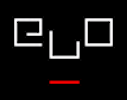Your cart is currently empty!
ELO
-
COSIGN 2003
COSIGN 2003: The 3rd International Conference on COMPUTATIONAL SEMIOTICS FOR GAMES AND NEW MEDIA will be held at the University of Teesside (UK) September 10 – 12, 2003 and will… Read more.
-
DRH 2003
DRH 2003: Digital Resources for the Humanities will occur at the University of Gloucestershire 31 August – 3 September 2003. The DRH conference brings together scholars, librarians, archivists, curators, information… Read more.
-
New TIR Web
William Poundstone’s ground-breaking New Media piece premieres in this issue. Also included is new work from John Cayley and an interview with Cayley by Brian Kim Stefans. Read more.
-
Master Plan
“Le Musee di-visioniste,”an online museum based on a philosophical idea, and corporative member of New Media Art Project Network, launches new online showcase of net-based art works. Works by Daniel… Read more.
-
Electronic Poetry Event
Stephanie Stickland will read from V at the UCLA Hammer Museum on Tuesday, February 4 at 7 pm. The Hammer Museum is in Westwood, at the northeast corner of Westwood… Read more.
-
New Beehive Online
The latest edition of the hypermedia journal Beehive includes work by Bill Marsh, Joseph Nechvatal, Millie Niss, Jon Fried, Juliet Ann Martin, Miranda F. Mellis, Marianne Shaneen, and Alan Sondheim. Read more.
-
Break Festival
Submission deadline to BREAK 2.2 FESTIVAL (‘INVISIBLE THREAT’) extended. Artists from various fields of art can submit their proposals to the Break 2.2 Festival call for applications through February 15,… Read more.
-
Reviews in Cyberculture Studies
Reviewed in this issue of Cyberculture Studies: Evolving Traditions, Artists Working in New Media, The Internet and Health Communication: Experiences and Expectations, Virtual Gender: Technology, Consumption and Identity. Read more.
·
-
HyperRHiz Requests Submissions
Hyperrhiz Editor Jason Nelson requests submissions for a new issue of the journal. He writes “I’m curious about hidden work….work that must be discovered, be found…much like the secret compartment… Read more.
·
-
technoetic arts Requests Submissions
Technoetic Arts, a peer-reviewed journal presents the cutting edge of ideas, projects and practices arising from the confluence of art, science, technology and consciousness research. It has a special interest… Read more.
·
